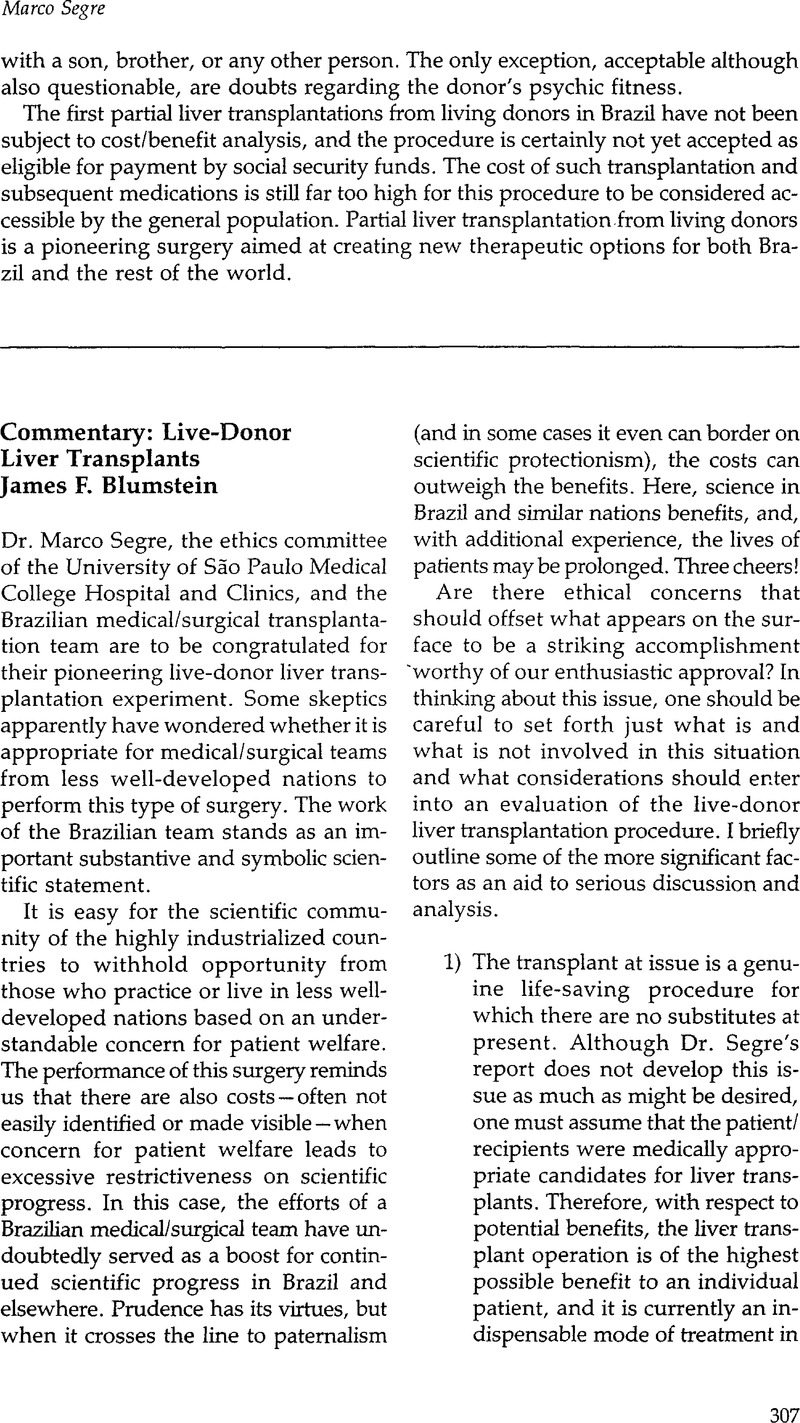Article contents
Commentary: Liver-Donors Liver Transplants
Published online by Cambridge University Press: 10 December 2009
Abstract

- Type
- Special Section: Organ Ethics
- Information
- Copyright
- Copyright © Cambridge University Press 1992
References
Notes
1. Caplan, A, Siminoff, L, Arnold, B, Virnig, B. Increasing organ and tissue donation: what are our option? In: Novello, A, ed. Surgeon General's Workshop on Increasing Organ Donation, Washington, D. C.: DHHS, 1991: 199–232.Google Scholar
2. Caplan, A. Is xenografting morally wrong? Transplantation Proceedings 1992; 24: 722–7.Google ScholarPubMed
3. Segre, M. Partial liver transplantation from living donors. Cambridge Quarterly of Healthcare Ethics 1992; 1: 305–307.CrossRefGoogle ScholarPubMed
4. Segre, M. Partial liver transplantation from living donors. Cambridge Quarterly of Healthcare Ethics 1992; 1: 305–307.CrossRefGoogle ScholarPubMed
5. Yankelovich, , Clancy, , and Shulman, . The ethical questions of organ donation. 06 4–5, 1991; press release.Google Scholar
6. Yankelovich, , Clancy, , and Shulman, . The ethical questions of organ donation. 06 4–5, 1991; press release.Google Scholar
7. Kearney, W, Caplan, A, Parity for donation. In: Blank, R, Bonnicksen, A, eds. Emerging Issue in Biomedical Policy. New York: Columbia University Press, 1992: 262–85.Google Scholar
8. Beauchamp, TL, Childress, JF. Principles of Biomedical Ethics. 2nd ed.New York: Oxford University Press, 1989.Google ScholarPubMed
9. Beauchamp, TL, Childress, JF. Principles of Biomedical Ethics. 2nd ed.New York: Oxford University Press, 1989.Google Scholar
10. Council of the Transplantation Society. Commercialization in transplantation. The Lancet 1985; 8457: 715–6.Google Scholar
11. Swedish Committee on Transplantation. Transplantation. Stockholm: Swedish Ministry of Health and Social Affairs, 1989.Google ScholarPubMed
12. Ramsey, P. The Patient As Person. New Haven: Yale University Press, 1970.Google Scholar
13. Kreis, H. Why living related donors should not be used whenever possible. Transplantation Proceedings 1985; 17: 1510–4.Google Scholar
14. Starzl, TE. Will live organ donation no longer be justified?. Hasting Center Report 1985; 15: 5.CrossRefGoogle ScholarPubMed
15. Council of the Transplantation Society. Commercialization in transplantation. The Lancet 1985; 8457: 715–6.Google Scholar
- 1
- Cited by


